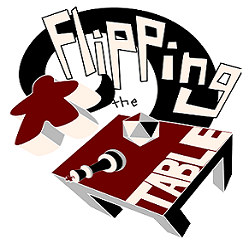/pic301950.jpg)
BACKGROUND: Pip is a tile game published in 1991 by Puremco. It is a variation on the game of dominoes, with a few new twists thrown in.
GAMEPLAY: Just like in Dominoes, players start with a hand of 9 tiles (15 for 2 players), while the rest remain face-down. The turn plays along the chain of dominoes by matching the same number of dots, or pips, on both sides. If a player cannot play, they draw from the stock pile, and then must either play a tile or pass to the next player clockwise.
SPECIAL: Unlike most Dominoes, there are 5 special tiles, which have effects when played, but which still must be matched:
- Pip: Represented by a P with 3 arrows on the bottom, is a wild and can represent any tile.
- S: Skip the next player
- R: Reverses play order
- A: Gives that player an additional turn.
- D: The next player draws a tile from the stock pile. If there's none in the stock pile, the player using the D tile passes a tile from their hand to the next player.
/pic1568534.jpg)
STARTING: The game starts by any player first playing either the double 1 tile, or the double "Pip" tile, which turns into double ones. If neither is drawn, one player draws from the stock, and the next player draws until a tile can be placed. The next player then starts with either a 1 or a pip horizontal to the tile. The next players then play on either the un-played side of the original domino, or on the previously played domino. Players are free to play on either side of any domino, or on the top and bottom of the starting tile once both sides of the starting tile have had play.
DOUBLES: When a Double is played, it is placed vertical to the tile. Then, unless it is the starting tile, the next three plays must be played on the double using either a corresponding number tile or a wild-pip tile, until it makes a three tile path, which any player may play on.
/pic301982.jpg)
CONCLUSION: Pip is a Dominoes game. Shocking, I know, but let me explain what I mean. At the end of the day, even with it's special center piece holder, or its weird tiles, or even its ability to play more tiles, it is Dominoes. Sure, it may look flashier, but unlike the other games I've reviewed this month, there's not a lot that changes it from just playing Dominoes. Now, does that mean that you shouldn't play it, that it's just the same game with another skin, like most 'versions' of Monopoly? Not necessarily. While it is true that Pip is just Dominoes, it does have enough to be surprising, to stand out that it really is worth a look. Just, if you want to try it, expect it to be Dominoes, and nothing else.




/pic3925506.png)
/pic3615461.jpg)
/pic4025441.jpg)
/pic4026577.jpg)